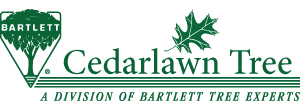Emerald Ash Borer Found in Massachusetts
Emerald ash borer (EAB), an insect that causes decline and death of ash trees, has now been found in western Massachusetts. This is an introduced, non-native, insect pest that was first identified as causing death of ash trees in the US in 2002. It is thought to have been intoduced from Asia. Since being discovered in the US it has been spreading in the upper Northeast quarter of the United States. It had recently been identified in CT earlier this year.
Emerald ash borer is a greenish, elongate (around ½” long) beetle as an adult. The immature (larval) stage causes tree damage. The larvae burrow into a tree after hatching from eggs laid by adult beetles. The larvae feed on the wood underneath bark that conducts nutrients and water. This disrupts movement of water and nutrients within a tree and ultimately can kill a tree if left unchecked. Adults emege from trees in late May or June, leaving a D-shaped hole in the tree.
People may confuse news of this insect with that of Asian longhorned beetle (ALB). ALB has been in the news much over the course of the last several years with a significant population located in the Worcester area. Eradication efforts and tree mortality from insect feeding have resulted in many trees being cut down. ALB can attack and kill multiple genera of trees. Emerald ash borer only affects ash trees.
It may be only a matter of time until EAB shows up in the Boston area. If it does what impact will it have? White ash is a native species found in woodlands here. Some of these trees exist in landscapes. White and more often green ash may be planted in some landscape settings. If attacked and left untreated these trees will probably be lost. National efforts used to reduce the impact of the pest are geared toward containment and not eradication. Movement of firewood is one of the main ways this pest moves from area to area. Restrictions will prohibit movement of ash wood if EAB is found in our area. What this means is that finding evidence of EAB on your tree will not require immediate removal as it would be for ALB.
What should you do now if you have ash trees you want to protect? 1) do not bring ash tree firewood onto your property 2) contact a certified arborist to monitor these trees 3) depending on how valuable the tree is you may want to begin to treat trees to help protect against attack- this will become more important as pest sitings occur closer to our area. If treated before damage is readily evident several products have been shown to reduce mortality effectively if used in a timely and appropriate manner. For further informational please refer to this web site (http://www.emeraldashborer.info/) dedicated to EAB.




